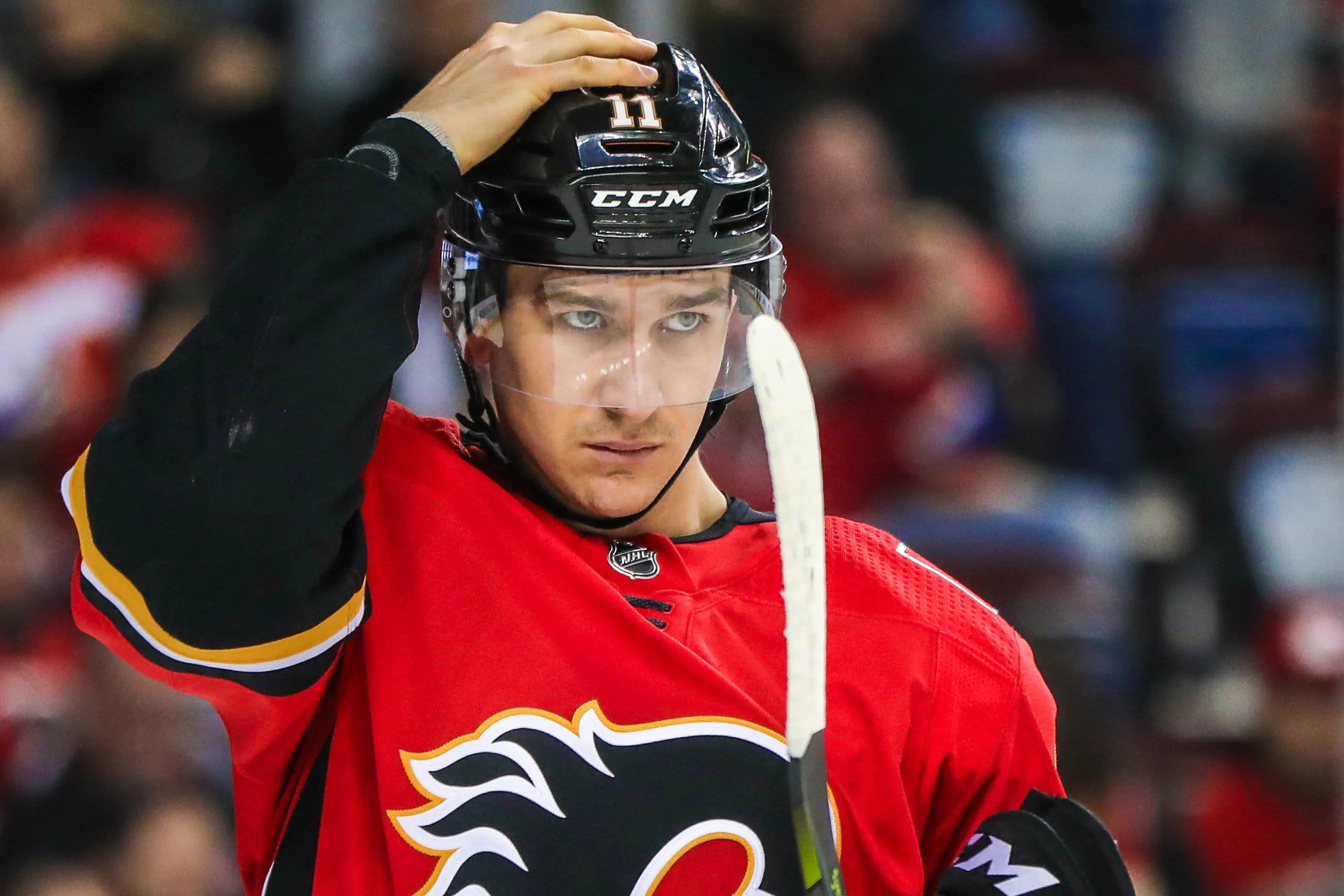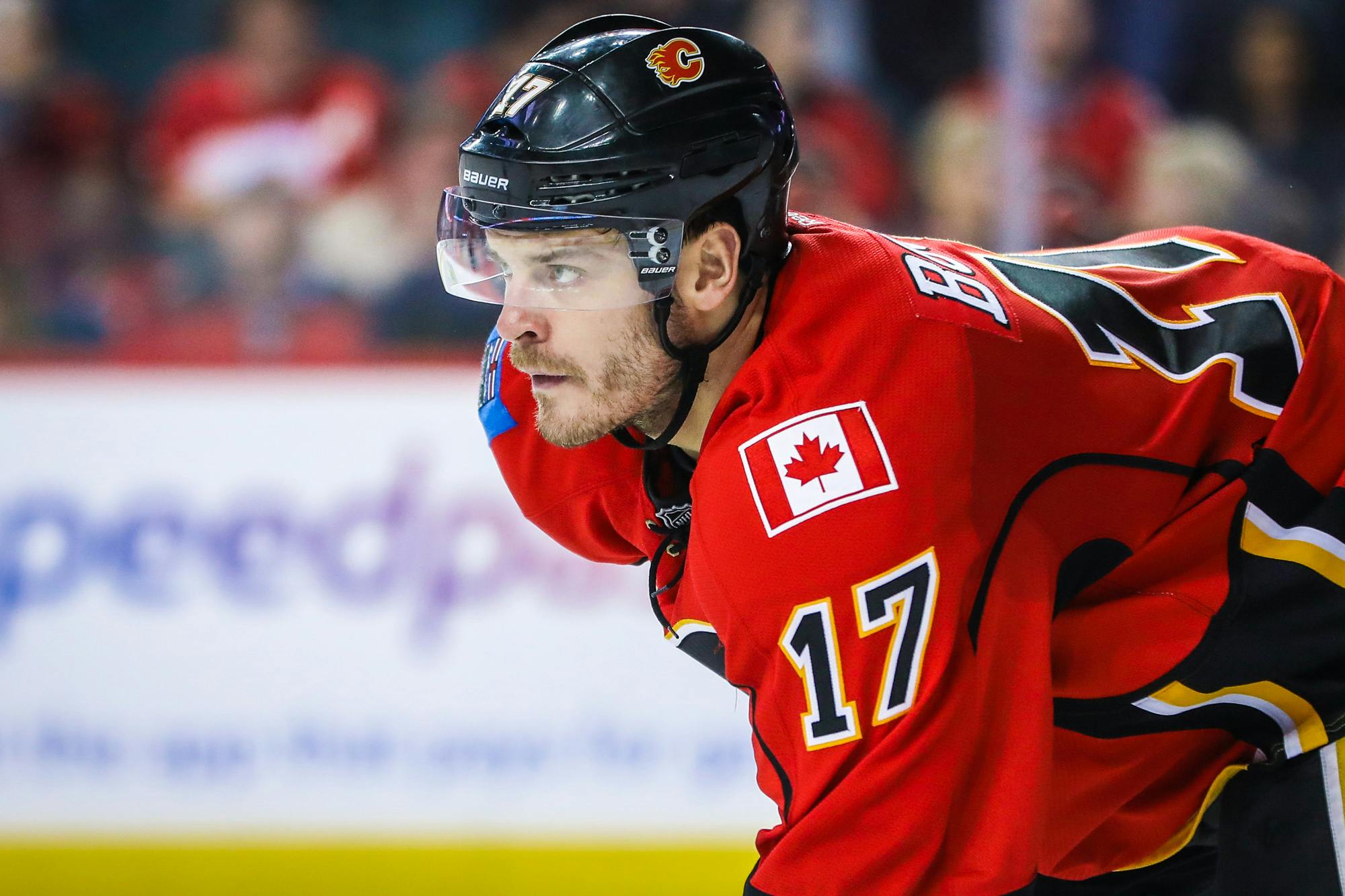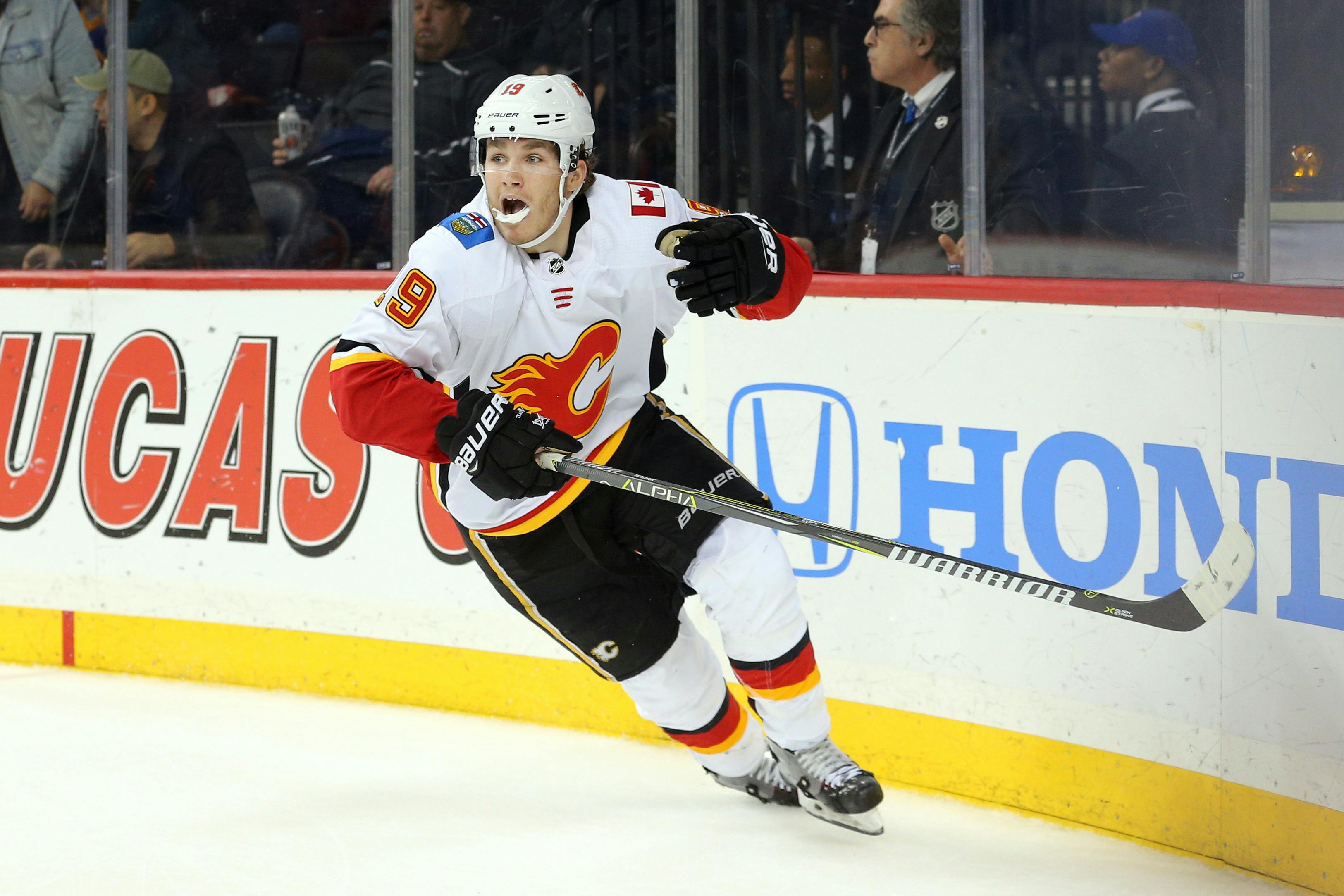Internal contract negotiations make up Brad Treliving’s best work

The signing of Elias Lindholm to a six-year, $29.1 million contract earlier this week continued an impressive theme for Flames’ general manager Brad Treliving. Since taking the reins in April 2014, Treliving has forged a reputation of being a tough negotiator and it’s yielded impressive results, particularly in one area: internal contract negotiations. When it comes to re-signing his own players, Treliving’s batting average is pretty stellar.
It’s important to note Treliving’s track record in trades and free agency is far more hit and miss. He’s absolutely hit on signings like Michael Frolik and on trades like the initial Hamilton acquisition, but we’ve also seen more ill-fated decisions, too. Troy Brouwer’s four-year deal in free agency and the high-priced Travis Hamonic trade come to mind when thinking about less successful moves.
When getting down to brass tacks with his own players, though, Treliving has gone to work in an impressive way.
THE BIG GUNS

Brace Hemmelgarn-USA TODAY Sports
Sean Monahan (7 years, $6.375 million AAV). Calgary’s number one centre was the first big money contract signed by Treliving and, two years in, it looks like a home run. Monahan’s contract is right in line with contemporaries Nathan MacKinnon, Mark Scheifele, and Aleksander Barkov and buys three years of unrestricted free agency.
No one from the 2013 draft class has more goals than Monahan’s 138 and only MacKinnon (303) has more points than his 281. Turning 24 in October, Monahan is good for a baseline of 27 goals and 60 points with room to improve on those numbers. Now that he’s fully healthy, and knowing who he plays virtually every second with, it wouldn’t surprise me one bit to see career numbers from Monahan this season. That’ll make his cap hit look even better with five years still to go.
Johnny Gaudreau (6 years, $6.75 million AAV). Despite being one of the two highest paid players on the team, Gaudreau’s contract signed on the eve of the 2016-17 season still carries solid value. Gaudreau was a top 20 scorer last year yet had a cap hit lower than most players in the same conversation. Just two years into his six-year deal, Gaudreau’s $6.75 million seems slightly below market value for an elite offensive talent.
The only negative with this contract is the length, because eight years would have been ideal. Remember, this contract negotiation dragged on and caused Gaudreau to miss all of the 2016 preseason. As such, both teams probably had to cave a little bit. From a team perspective, though, the Flames will have zero issue with Gaudreau’s cap hit for the next four seasons.
Mark Giordano (6 years, $6.75 million AAV). I know many look at the other highest paid player on the team as a potential cap anchor going forward, which I fully understand. Giordano turns 35 to start the coming season and still has four years left on a big money deal. When you think about the circumstances, though, Giordano’s contract makes a whole lot more sense.
The team was in a tough spot when negotiating the captain’s new deal. A true late bloomer, Giordano only entered elite status in his late 20s and early 30s, making his deal complicated to begin with. The fact Giordano held a great deal of leverage made things even more difficult for Calgary. The team couldn’t afford to lose their best defenceman and the player wasn’t going to sign a short-term deal.
So, the Flames and Giordano settled on a six-year deal at a reasonable cap hit, at least considering his status at the time. The good news is Giordano has played at Norris Trophy levels in the first two years of his contract. Yes, six years is longer than ideal, but I’m not sure Treliving had much of a choice; trading the team’s captain wasn’t truly realistic at the time. The fact Giordano didn’t get an eight-year term was a small victory.
THE DEPENDABLES

Sergei Belski-USA TODAY Sports
Mikael Backlund (6 years, $5.35 million AAV). Considering how vital Backlund has been to Calgary’s success the last few years, his cap hit is probably right where it should be. Guys who put up 50 points on a perennial basis and factor into the Selke conversation get paid around $5 million per season. More importantly, the Flames didn’t give Backlund a crazy UFA bump. Had he gotten to free agency this summer, it’s a pretty solid bet Backlund would have gotten more term and money with another team.
Treliving has signed Backlund twice, and both contracts looked pretty good at first blush. Backlund’s newest deal carries him to the age of 35 and there’s a good chance we’ll still be talking about an effective player when we get there. Backlund doesn’t rely on burning speed or brute strength; he’s one of the game’s more cerebral players and that should keep him relevant throughout the six-year duration.
TJ Brodie (5 years, $4.6504 million AAV). I’m in the same camp as many others in saying Brodie’s decline the last two seasons is worrying. What makes it less concerning is his very reasonable contract. Sure, Brodie had a rough 2017-18 campaign, yet still averaged 23:41 per game (second on the team) and put up 32 points off the blueline. Compared to his cap hit, Brodie still gave Calgary decent value.
Beyond the cap hit, Brodie’s deal found a nice sweet spot with term; he’ll be 28 and 29 in the final two years. Even if Brodie doesn’t bounce back dramatically paired with Mark Giordano again, this contract won’t hurt the Flames between now and its conclusion. Knowing where Brodie was when the deal was signed, this one looks pretty good on Treliving, too.
Honourable mentions. While he hasn’t played a game with Calgary, I’m a big fan of Monday’s deal for Lindholm. As we discussed earlier this month, six years is the perfect term for Lindholm and to keep his cap his under $5 million is a minor coup. I’ll also put Sam Bennett’s deal (2 years x $1.95 million) in here, too, because Treliving used every ounce of his leverage to keep those numbers down.
THE MISSES

Sergei Belski-USA TODAY Sports
Lance Bouma (3 years, $2.2 million AAV). Treliving’s worst re-signing came in the summer of 2015 after Bouma and the team went through the arbitration process, but prior to a ruling being handed down. In hindsight, the team probably should have let the arbitrator render his decision.
Even though it was only three years, most questioned the wisdom of giving Bouma $2.2 million off a wholly unsustainable career season at the time of the signing. Any defenders of the contract were converted when Bouma reverted to a replacement level player in year one of his contract. The team eventually bought Bouma out two years later.
Michael Stone (3 years, $3.5 million AAV). The good news when looking at Treliving’s two rare misses here is term: at least both Bouma and Stone only signed three-year deals. In Stone’s case, the contract he agreed to last summer isn’t as hard to swallow as Bouma’s, because at least I understand the reasoning.
Yes, the cap hit is too high for a third pairing defenceman, but Stone was signed as an insurance policy for a team expecting to make the playoffs. I get it, and while if I don’t think it’s a great deal, it’s not egregious, even if Stone plays out the final two years. In saying that, I think there’s a realistic chance Calgary moves Stone prior to the trade deadline.
TO BE CONTINUED…

Brad Penner-USA TODAY Sports
Treliving has two more significant deals to sort through in the immediate future. Matthew Tkachuk might be the team’s most important player going forward and signing him long-term is an absolute must, preferably as soon as possible.
Recently acquired Noah Hanifin is a restricted free agent as we speak, and his negotiation is fascinating. I think a bridge deal makes sense for both sides, but is that what we end up seeing? Regardless of the outcomes, though, Flames fans can be confident Treliving will get both Tkachuk and Hanifin signed to solid contracts. It’s the GM’s calling card, after all.
Recent articles from Pat Steinberg




